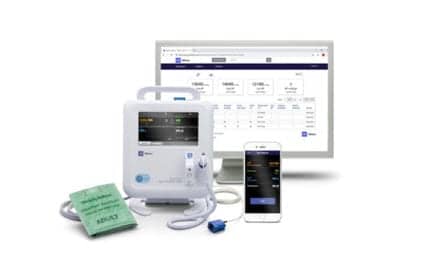The US Food and Drug Administration (FDA) granted 510K clearance to GE HealthCare’s Critical Care Suite 2.1 featuring a pneumothorax algorithm for the detection, notification, triage, and diagnosis of pneumothorax.
The updated pneumothorax algorithm expands Critical Care Suite’s on-device triage capabilities by providing immediate notification of the presence or absence of pneumothorax, as well as an overlay display both on-device and in the picture archiving and communication system (PACS) to assist with pneumothorax localization.
X-ray is the oldest form of imaging and a valuable tool on the frontlines of patient care, accounting for over 60% of all imaging exams, according to the World Health Organization. With the high number of chest X-rays ordered as “STAT,” or immediate priority, the triaging of true STAT orders remains a challenge.
With this latest update, Critical Care Suite 2.1 provides immediate on-device detection and triage notifications for the presence or absence of pneumothorax. When a pneumothorax is detected, an overlay is displayed in the area where the pneumothorax was located both on-device as well as in PACS to assist with pneumothorax localization, as well as improve speed and accuracy of pneumothorax diagnosis.
By hosting Critical Care Suite on-device, critical insights are available at the point of care and across the entire clinical care team. Early users of this technology see the benefit of bedside access to critical clinical information, according to a release from GE HealthCare.
“The ultimate journey for an AI tool from bench to bedside is when you involve the entire clinical team including bedside physicians, nurse practitioners,and radiologists,” says Amit Gupta, MD, division chief of cardiothoracic imaging at University Hospitals of Cleveland, in a release. “GE HealthCare’s innovation with Critical Care Suite to have alerts on mobile systems is helping clinicians make decisions with confidence in these critical moments.”
The algorithm operates with a high degree of accuracy, partially localizing 100% of all detected large pneumothoraxs and 96% of all detected small pneumothoraxs while limiting false alerts (94% specificity).
According to the company, results from various clinical studies also showed significant user benefits when using this technology including a 57% reduction in reporting times for clinical actionable pneumothoraxs and a 17.7% increase in clinician detection of small pneumothoraxs.
“Artificial intelligence applications in healthcare continue to prove their value in clinical practice and on the frontlines of patient care,” says Jyoti Gupta, PhD, president and CEO of women’s health and X-ray for GE HealthCare, in a release. “The adoption of these digital solutions helps unlock efficiencies across the entire clinical workflow and empowers radiologists and their teams in making critical decisions with confidence in time-sensitive situations.”
Photo caption: On-device Critical Care Suite 2.1 output from GE HealthCare’s AMX Navigate mobile X-ray system showing pneumothorax overlay and confidence level.
Photo credit: GE HealthCare










